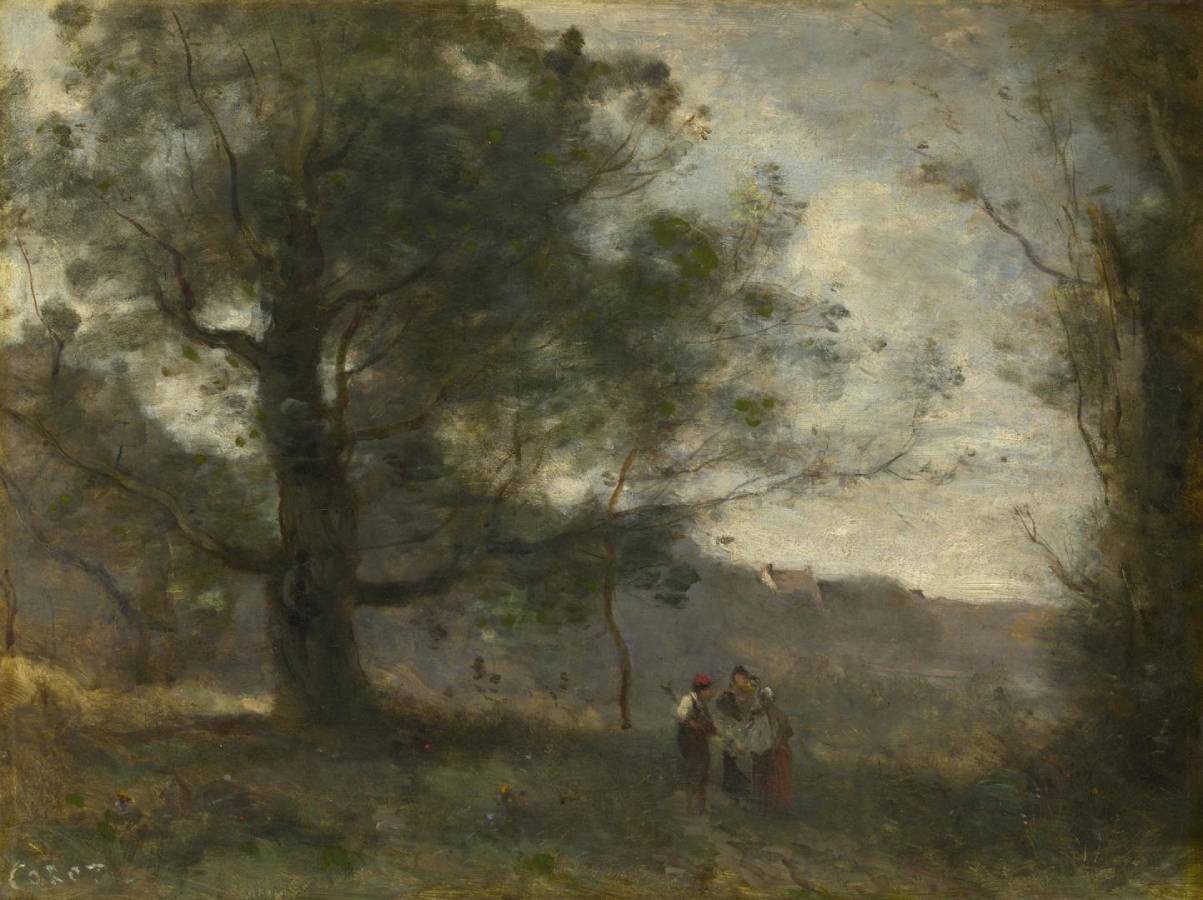Corot, Jean-Baptiste-Camille (1796-1875)
Le chêne de la vallée (The Oak in the Valley)
1871
Oil on canvas, 39.8 × 52.8 cm
National Gallery, London
This view was one of several pictures that Corot painted in May 1871 while he was staying with his friend Alfred Robaut in Douai. He had gone there to escape the Paris Commune, a revolutionary government which had taken power in March that year following France’s defeat in the Franco-Prussian war. Many of the pictures Corot painted during his stay in northern France are of specific sites, such as The Marsh at Arleux and Souvenir of Palluel, but this particular view has not been identified. It seems likely that Corot painted it in the studio, and it takes its title from the dominant tree standing at the left.
In the foreground three figures are huddled in a group. The characteristic red hat worn by the man on the left is a common feature of Corot’s figures, introducing a contrasting note of bright colour in the green of the landscape. The handling, particularly of the tree and foliage, is very typical of Corot’s late style. The preliminary sketching-in of the trees is visible through the paint, and many of the earlier branches, painted in fluid black paint, can be seen under the surface. Corot then used a brown, glaze-like paint to pick out the trunk of the main tree and further branches. The paint varies greatly in thickness: the undergrowth at the extreme left is depicted in very thin fluid brown paint, whereas a thicker paint has been used in the sky, such as the stroke of off-white which follows the line of the hills at the right. Corot used the handle-end of the brush to scratch the forms of grasses into the paint in the right foreground (a technique he also employed in The Four Times of Day: Noon). At a late stage he added a series of bright olive-green highlights, for example along the bottom edge, in a mixture of paint which included emerald green. (NG)
